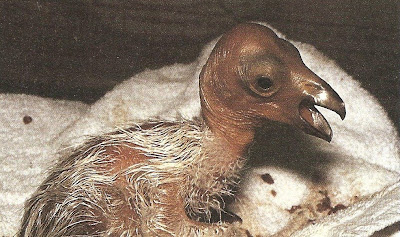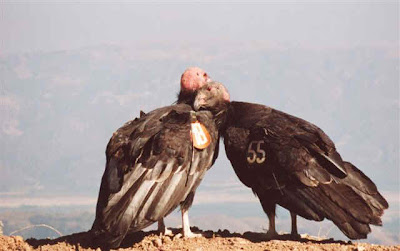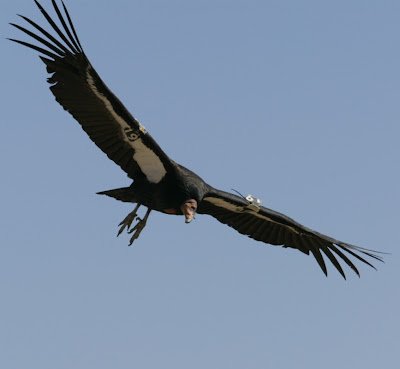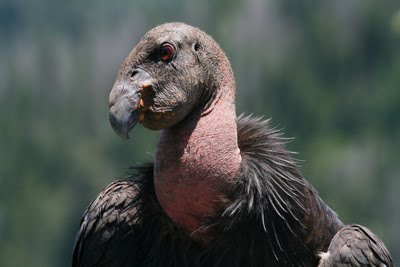
You can’t hunt a California Condor, but the results of hunting can still kill them. Necropsies recently performed at the San Diego Zoo’s Institute for Conservation Research confirmed the presence of lead fragments in the digestive tracts of three birds, a young male, a female and her one year old wild-hatched chick.
 Courtship display
Courtship displayWhen the state of Arizona agreed to release captive bred condors in 1996 from the Vermilion Cliffs just north of Grand Canyon National Park no laws were passed to change the ammunition used by hunters. Arizona Game & Fish did implement an education program in 2003 for hunters and offers a coupon for free copper ammunition to be used in the condor’s core range. Voluntary compliance reached 85% in 2009. After all, who really wants to bring wild meat home laden with lead fragments for family and friends to ingest. California banned the use of lead ammunition in condor areas almost two years ago.

Condor’s feed on carrion, dead animals, and often the gut piles left behind by hunters. Lead shuts down the condors’ digestive system, which leads to starvation, weakness and death. Released birds are fitted with tracking equipment and monitored. About twice a year the condors are captured and tested for lead exposure. Birds with high blood lead concentrations are treated with chelation therapy to reduce the lead in their systems.

Arizona’s 75, less 3, condors now forage beyond state borders, which is a good thing, if they can be protected. The Utah Division of Wildlife Resources plans to implement a program similar to Arizona’s for hunters on the Zion unit in southwestern Utah.

Condor recovery program officials state this is the first loss to lead poisoning in three years.

Condor conservation partners include The Peregrine Fund, Arizona Game and Fish Department, Utah Division of Wildlife Resources, Utah Wildlife in Need, Bureau of Land Management, National Park Service, U.S. Fish and Wildlife Service, and U.S. Forest Service.To learn more about California condors check out this post.
